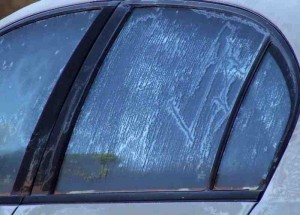Fog or condensation is caused when moist air comes in contact with cooler dry air similar to when your shower glass and bathroom mirror will steam up after a hot shower. This type of “sweating” can occur can occur on both the inside and outside of your glass due to temperature differentials. It is important to note however that the actual glass is not to blame for the fog or condensation, because glass surfaces simply reveal the fog better than other surfaces owing to the fact they have the lowest temperatures that any other surfaces in a home. You do not need to worry, you won’t need some form rock chip repair service if this keeps happening.
The underlying of cause of condensation is the level of moisture in the air, and the reason it may occur constantly and in large amounts is because of modern energy efficient home building products and techniques. Modern insulation and construction materials are designed to prevent cold air from seeping through especially with regards to windows and also keep warm air inside. But in the case of older windows, the ones with old rubber seals and weather stripping, moist air would escape.
The reason you didn’t notice as much fog before you replaced your old windows is probably because they were drafty. Good quality windows and insulation form fences for the air exchange in a house, and excess fog occurs when condensation from showers, clothes dryers and even cooking are not vented properly to the outside or the rubber seals are compromised due to gradual wear and tear.
Condensation and the consequent fog in a home can be reduced in several ways, but it is important to understand where this moisture is conceived. During the summer months, your house tends to absorb moisture and this is the same for remodeled or newly constructed homes owing to the tremendous amount of moisture from the materials used in the construction.
Basically, everything that involves water in your home will contribute to humidity, condensation and fogging such as heating/air-conditioning units, mopping, showers and even watering plants. Excessive condensation may also be an issue linked directly with the windows such as chips or cracks in the glass, broken rubber seals, a drafty old window seal, cracked or peeling paint or gaps between glass and window frames resulting in excess airflow.
Condensation also occurs in the winter months particularly around the time when you first start to heat your home. However, this condensation will tend to gradually dry out after a few weeks, and a temporary solution is to open a window slightly to let the cold air in and allow the moist air to escape. Although fogging is not completely preventable, there are several things you can do to prevent the issue.
First ensure that all exterior ventilation units are installed properly, meaning that they are open and flowing. It a good idea to periodically open your windows and doors to air out your home in order to discharge the moist air and welcome dry air. A humidifier is a great machine to help you considerably decrease the level of condensation in your home, provided it is installed properly. Lastly, keep indoor plants watered, but not to a point where they are over saturated, which only add to the moisture in your home.
Finally, it is important to take note that you may see an influx of fog even when you first install new windows, which is simply because the old fittings were cracked and drafty. But your new windows have newer and tighter seals so will adjust to the environments gradually.

